Ansel Adams and John Sexton are now widely recognized by many critics as landmark figures in the history of American and world photography. Their main masterpieces demonstrate that this type of visual art cannot be reduced to mere emulation of life and the surrounding world; more likely, it is a powerful means of self-expression or even rendering one’s emotions and feelings. They also show that a photographer must possess good technical skills and a prodigious sense of timing to detect and capture the ephemeral moment; without these properties, he or she is rather unlikely to succeed. Furthermore, imagination and sensitivity are not sufficient for success because photography also demands a scientific approach that enables to render most precise details. This paper aims to compare and contrast such works as LA Freeway (Appendixes, Picture 1) by Ansel Adams and Stream Turbine Detail (Appendixes, Picture 2) by John Sexton. These photographs have been selected because they allow us to draw parallels between the style of these artists, their vision, and their techniques.
First, it is necessary to pay attention to such criteria as the themes explored by the authors, how they convey their ideas to the viewer. Secondly, it is vital to examine the use of shades and contrast; we need to identify the purpose for employing a certain artistic technique. Finally, the comparative analysis of these works should incorporate other photographs made by Adams and Sexton. The thing is that these examples (LA Freeway and Stream Turbine Detail) that we are going to study represent only a small part of their vast heritage. Although there might be immense dissimilarities between Adams and Sexton, we may say their pictures explain the key challenges that a photographer has to face.
First and foremost, it should be pointed out that Ansel Adams and John Sexton were acquainted with one another: Sexton was Adams assistant and student for a very long time, more than five years (Bidner & Wegner, 92). Most importantly, he was immensely influenced by his teacher. In particular, we should speak about Adams Zone System, developed to measure and estimate exposure (Spaulding, 132). This approach gives a good opportunity to visualize future photographs with almost mathematical accuracy. Currently, this method enjoys immense popularity among photographers throughout the world. As his student, John Sexton immensely relies on this method in his works. It should be borne in mind that in his youth Sexton gave preference to color photography, yet when he saw Adams works he decided to switch black-and-white pictures (Bidner & Wegner, 92). So, in part, these facts prove that their artistic styles may be reminiscent of one another. At first glance, one may even suppose that Sexton is just a faithful follower of Adams and his techniques. It has to be admitted that they do have many features in common but at the same time, each of them creates his artistic manner which is inimitable and unprecedented in its way. However, the best proof of this argument is their photographs.
The first assumption that we can make about these works is that both of them achieve an effect of optical illusion and this is one of the most difficult tasks for a photographer to carry out. Adams photograph which is entitled LA Freeway, is a very prominent example of the industrial landscape. Hypothetically, it could be taken from the height of three hundred feet or even more. It depicts one of the major roads in Los Angeles and probably in the United States and presents a broad view of the city. In this case, we need to emphasize the idea that, this work is not just a snapshot for it gives rise to multiple associations and symbols. One of them is the image of an enormous serpent or snake which encircles the city and moves along the streets.
Perhaps, it is a far-fetched conclusion but this picture indicates that Adams was extremely knowledgeable in the psychology of visual perception. Actually, from a psychological standpoint, LA Freeway can be regarded as a case of optical delusion as the photograph conjures up several images which have nothing to do with the object, presented in this picture. Only after close examination, one can see the vehicles and even small houses below the road. At this point, we may argue that Sextons Stream Turbine produces a similar impression on the viewer. At the very beginning, it may even appear that the author has photographed a huge animal, and only after a few seconds, it becomes clear that this is an inanimate object, a mechanism. We should mention that John Sexton has made several photographs in this manner, for instance, Nevada Transmission Line or Atlantis Soars (Kodak Professional, unpaged). These photographs explore the animism of the industrial or urban landscape. The authors illustrate the idea that human imagination can breathe life even into inanimate things. Of course, these ideas can easily be disputed and they should not be taken for granted. Furthermore, this discussion represents only a subjective interpretation of these works, and someone can disagree with it.
It should be taken into consideration that the illusiveness of forms and shapes is more typical of John Sexton. In this regard, we need to refer to his collection which is called Places of Power as the photograph Stream Turbine is only a constituent part of this collection. It includes a great number of photographs that produce an impact similar to optical delusion, for instance, the picture Ceiling House (Appendixes, Picture 3). By using dark shades of grey, John Sexton makes the onlooker believe that the sky is coming dangerously close to the earth.
In general, the use of this technique is not characteristic of Ansel Adams. His photographs are more realistic. Naturally, he does not merely emulate the reality and artistry of his works cannot be disputed but he is mostly intent on showing the beauty of nature without making any changes to its image, while his student, John Sexton is inclined to envisage grotesque or even surrealistic images. It is rather difficult to explain why John Sexton wants to create such grotesque images, especially given the fact that he learned from and collaborated with Ansel Adams, who believed that “simplicity was the primary requisite for photography” (Adams as cited in Goldberg 378). Perhaps, this is an attempt to develop one’s unique style, distinctive from that one of Ansel Adams. Yet, this is just a hypothesis that should be either substantiated or refuted.
Still, even despite this difference, these artists try to show how fluid, temporal and ephemeral life is. Its shapes and forms are very changeable, dynamic, and often very elusive to the viewer. Yet, one should take into account the fact that Ansel Adams was not very much interested in industrial landscapes. LA Freeway is one of few photographs, executed in this manner, while John Sexton has an abundant collection of such pictures.
At this point of discussion, we need to emphasize the idea that the art of photography cannot be reduced to pure chance. Naturally, luck plays a very important role, but it is also vital to choose the right angle, distance, lighting, and so forth. Under some circumstances, a photographer does not even have time for it. In this regard, we may need to refer to Ansel Adams views about his art: he claims that “photography is not an accident – its a concept; it exists at or before the moment of exposure of the negative; from that moment, the process is chiefly one of craft” (Adams as cited in Goldberg 379).
Furthermore, in his opinion, “truly accidental photography is virtually non-existent” (Adams as cited in Goldberg 379). To some extent, the person must have the image of his future work and this ability to visualize is one of the critical skills for the visual artist. Therefore, a photographer can be treated as an artist and scientist, he or she is the person who has to possess both imagination and accuracy. On the whole, Adams fully implanted this philosophy to his pupil, John Sexton. Their artistic preferences might be different or even inconsistent with one another, but in terms of skills, they are equally matched. The works under analysis speak volumes about the mastery of both Adams and Sexton.
Another feature, which can be observed in both pictures and immediately attracts attention, is the meticulous depiction of minute details. For example, while looking at Stream Turbine, the observer will be able to discern every part of this construction, every curve, and junction. The same can be said about LA Highway. Despite the fact, that this picture was taken from a vertiginous height, it captures even the texture of the grass below the road. Thus, we can single out at least some similarities and the distinction between Ansel Adams and John Sexton. Both of them attempt to portray animism of the urban and industrial landscape. Nonetheless, Sexton is more oriented toward surrealism and grotesque.
One of the most critical aspects for us to describe is how Adams and Sexton visualize different shades of grey. As it has been noted before Ansel Adams worked out a method for estimation of the suitable film exposure. Furthermore, he created a scale or gradation, which ranged from pure black to pure white (Appendixes, Picture 4) (Zakia, 229). To some extent, it is an instrument that enables to better render tints in a monochrome regime. However, it is also possible to manipulate film exposure to have a desired effect on the onlooker. For example, John Sexton deliberately darkens the background in his Stream Turbine so that it can be even called pitch darkness, while the foreground of this photograph is extremely bright.
As a result, the outlines of the turbine become even more prominent and the white color becomes dazzling. On the whole, it is quite possible to say that the use of contrast is a characteristic feature of both these artists. Certainly, Ansel Adams is also renowned for the use of this technique but in this particular work, he practically does not manipulate exposure. It seems that his main intention is to present a broad panorama of the city. LA Freeway is one of the most unusual works for such Ansel Adams and it throws new light on his talent. Traditionally, his name is associated with the nature of the Wild West. However, here he shows the full strength of his artistic imagination: the thing is that urban or industrial landscape is one of the most challenging areas in photography. The most daunting task is to show their animism. Judging from LA Freeway, we can say that Ansel Adams coped brilliantly with this task.
Speaking about the use of contrast, we should say that John Sexton frequently tends to juxtapose pure white with pure black as he does in Stream Turbine. We may remember his photograph Face of Hoover Dam (Appendixes, Picture 5). The combination of these extremes prompts a person to think that he sees a white road that leads into the abyss. Again, we need to set stress on the idea that Ansel Adams seldom employees this device. One can draw only very few examples that illustrate the use of this technique in pictures. His famous Moonrise is arguably the only one. In this photograph, he strictly divides the scene into three major parts: pure black, white, and grey zones (Please, refer to Appendixes, Picture 6). However, the use of such technologies as contrasting is not widespread among the works of Ansel Adams. Arguably, this feature is one of the major distinctions between him and John Sexton.
To see the similarities and distinctions existing between the two artists, it is of crucial importance to make an overview of the themes which they explored. Ansel Adams was extremely fascinated by the nature in its primeval state (Dunlap & Maguire, 50). Very often his photographs contain no signs of mens presence. It appears that these places have never been touched by civilization. Urban landscapes are not typical for him. LA Freeway is one of the exceptions to this rule. In turn, the content of John Sextons works is more diverse. It covers wild nature, urban areas, industry, and other areas.
Therefore, this discussion enables us to mark the following characteristics peculiar to the style of Ansel Adams and John Sexton. First, both of them are the animism of nature: urban and rural landscapes. These artists try to prove that imagination can breathe life even into inanimate objects. Secondly, they are quite interested in such an effect as an optical illusion. To some, LA Freeway and Stream Turbine Detail contain elements that can mislead the onlooker and produce a false impression upon him or her. As for the differences between them, we should mention Sextons tendency toward surrealism and grotesque, while Adams prefers a more realistic presentation of the surrounding world. Finally, unlike his teacher John Sexton is more inclined to juxtapose shades effort to conjure up grotesque images. Despite these distinctions, the works of these visual artists prove that photography is a unique amalgam of art, science, and perhaps luck.
Appendixes
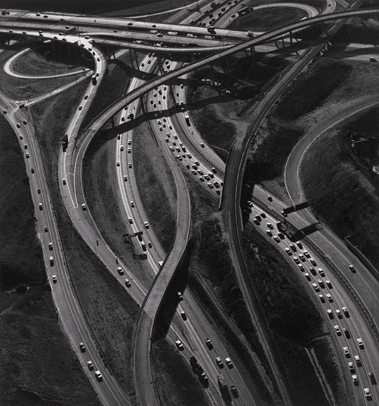
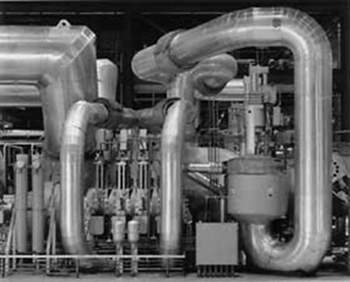
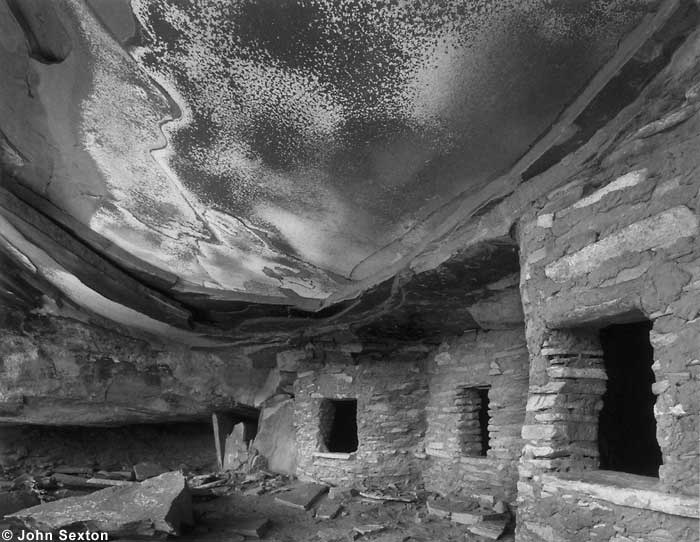
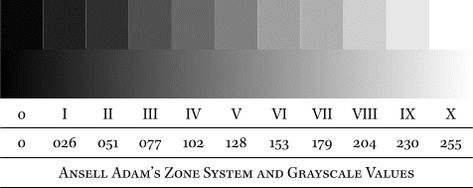
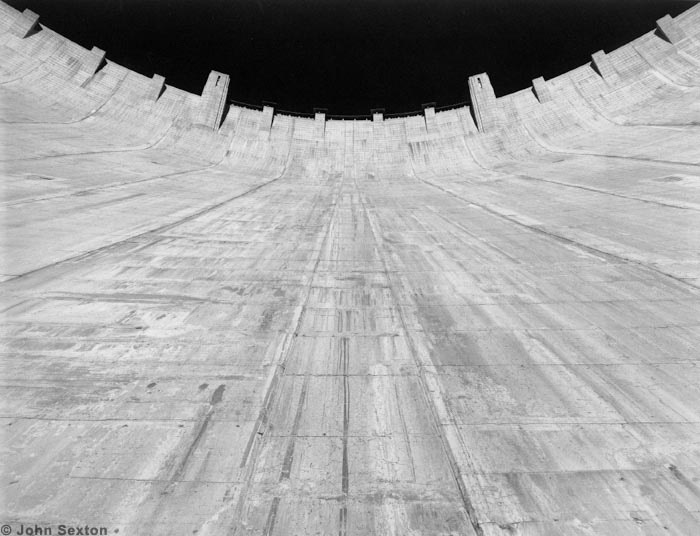
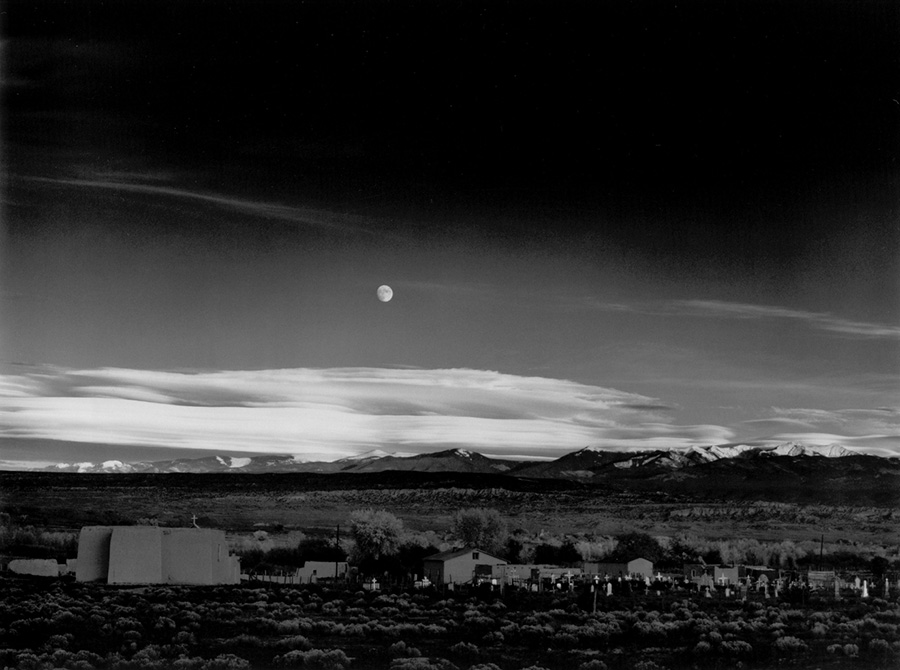
Works Cited
Bidner Jenny & Wegner Meleda. The Best of Nature Photography: Images and Techniques from the Pros. Amherst Media, Inc, 2002.
Dunlap Julie & Maguire Kerry. Eye on the wild: a story about Ansel Adams. Millbrook Press, 1995.
Goldberg Vicky. Photography in print: writings from 1816 to the present. UNM Press, 1988.
Kodak Professional & PDN Online. John Sexton: Places of Power. Web.
Spaulding Jonathan. Ansel Adams and the American Landscape: A Biography. University of California Press, 1998.
Zakia Richard. Perception and imaging. Focal Press, 2002.